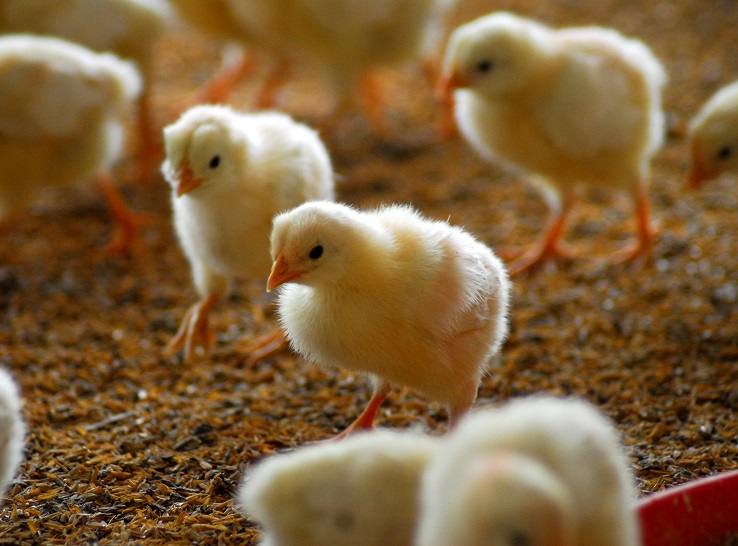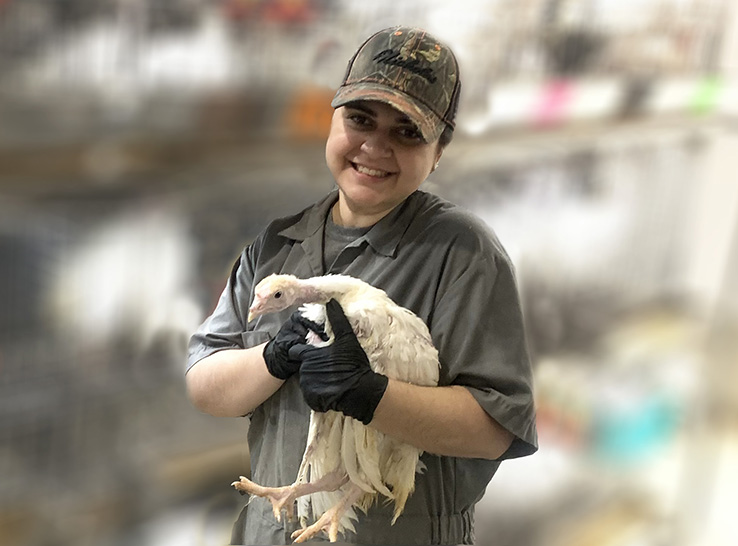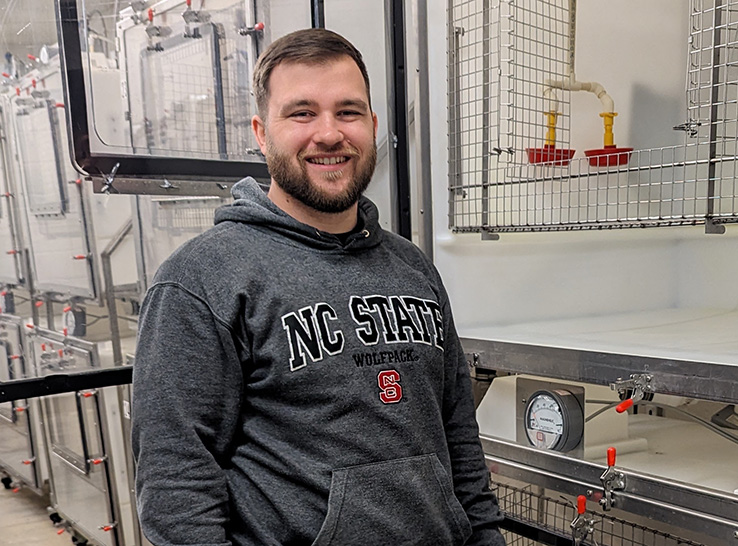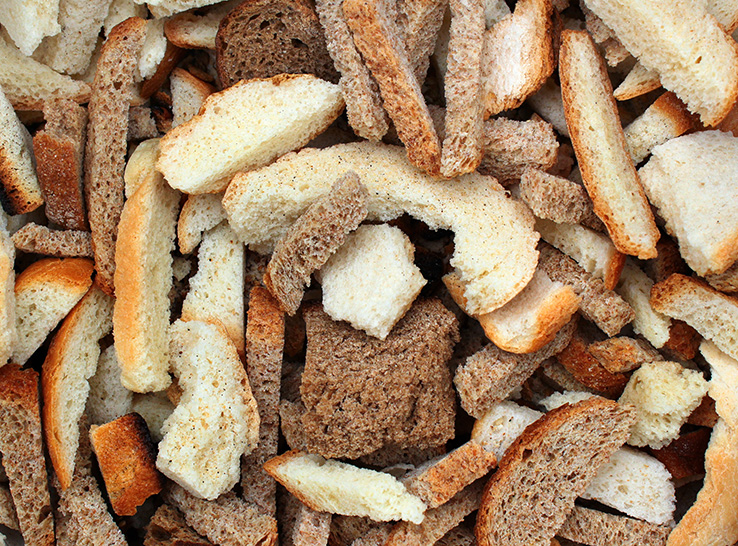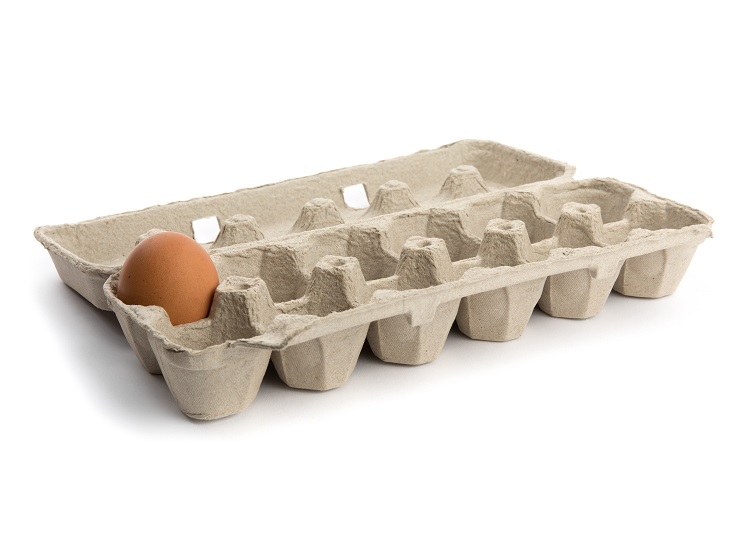By Ashley Gernat
Prestage Department of Poultry Science
North Carolina State University
Researchers often find themselves debating about what problem to tackle first, especially in the poultry industry. Sustainability, animal welfare, gut health, feed ingredients and food safety are just some of the trendy topics we often hear about these days.
When I began my PhD journey 2 years ago, I became interested in two seemingly unrelated topics. One was consumer perspectives. I began wondering how the poultry industry can counter misinformation about how poultry is raised and stop the sometimes unjustified criticism of animal production.
Great nutritional value
The other topic involves finding uses for the tremendous waste produced by segments of the North Carolina agricultural industry. Although the state is known for turkey production — second only to Minnesota — it also produces a lot of peanuts and berries. It occurred to me that peanut skins and waste from berries might be put to good use by the turkey industry because they have great nutritional value.
How could waste from produce and consumer perception be related? If adding peanut skins and berry waste to turkey diets can help improve turkey health, it might also benefit consumer perception of the poultry industry: If people see “natural” and “healthy” products are fed to poultry, they may have more favorable views of animal production and poultry products.
Potential benefits
It’s already known that peanut-skin extracts contain approximately 20 polyphenolic compounds that have antimicrobial properties and 68 compounds with antioxidant and anti-inflammatory properties, according to published research.1 Peanut skins have also shown positive results in a published study with broilers; meat from birds that received peanut skins in their diet had a reduced level of Salmonella.2
Less seems to be known about how berries affect turkeys. We know that wild turkeys eat berries, but much less is known about whether berries as a feed additive for turkeys have a positive effect. It is widely known that blueberries are a great source of biochemical compounds, and they are high in antioxidants and have anti-inflammatory properties.3
Elderberries likewise have beneficial properties such as phytochemicals, antioxidant properties, immunostimulant properties and a high amount of anthocyanins.4
Trials underway
Because all three products have characteristics that indicate potential for improving turkey health, I’m focusing on this area of research for my PhD thesis. I already have trials underway with peanut skins, blueberries and elderberries, fed at different inclusion levels. Depending on the results of the initial trials and availability of product, I will most likely focus on the impact of using one of the berries as a feed additive.
North Carolina farms in the area have been helpful. I’ve received peanut skins from a peanut farmer. A blueberry company that produces about 200,000 pounds of waste annually donated about 200 pounds for my research. Elderberry waste was from a local farmer who wants to contribute to research after the COVID epidemic prompted him to read and learn more about the benefits of elderberries for people.
The turkey industry is facing issues with the highly pathogenic avian influenza and has been for a while now. This issue won’t disappear overnight nor will other challenges such as control of Salmonella and high feed costs, just to mention a few. Researchers and industry workers are constantly trying to solve these issues and I would like nothing more than to contribute my grain of sand.
I have high hopes that my research may demonstrate that peanut skins, blueberry waste or elderberry waste, used individually or in combination, might contribute to improved turkey immunity and overall health — particularly gut health. If this proves true, these waste products might offer a more economical way to provide beneficial feed additives for turkey producers and lower feed costs. Maybe these waste products could even provide another alternative to antibiotics. If there are positive results, maybe it’s possible for them to be conveyed to consumers via product labels.
1 Reed KA. Identification of Phenolic Compounds from Peanut Skin using HPLC-MSn. 2009. https://vtechworks.lib.vt.edu/handle/10919/30160. Accessed December 22, 2023.
2 Redhead AK, Azman NFIN, Nasaruddin AI, Vu T, Santos F, Malheiros R, Hussin ASM, et al. Peanut Skins as a Natural Antimicrobial Feed Additive To Reduce the Transmission of Salmonella in Poultry Meat Produced for Human Consumption. J Food Prot. 2022;85(10):1479-1487.
3 Wang H, et al. Comparison of phytochemical profiles, antioxidant and cellular antioxidant activities of different varieties of blueberry (Vaccinium spp.). Food Chem. 2017;217:773-781.
4 Duymuş HG, et al. In vitro antioxidant properties and anthocyanin compositions of elderberry extracts. Food Chem, 2014;155:112-119.

